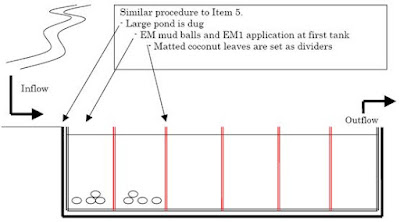EM1 AROUND THE WORLD: Lithuania
Mr. Audrius Galinis from the Lithuanian company Loba, who distributes EM•1® in Lithuania, has reported his own experience applying EM Technology™.
In 2009, a sugar factory accumulated a large amount of unused sugar beet pulp placed in a pit of the sugar factory complex in the city center of Marijampole city.
In spring 2010 the residents were annoyed to find the stench caused by the sugar beet pulp pit. Due to the hot summer in 2010, the residents of Marijampole appealed to the Lithuanian Environmental Protection Ministry to solve this serious odor problem.
Therefore, the sugar factory decided to suppress the odor with quicklime, but it did not help. In autumn 2010 the sugar factory's management contacted Loba, the Lithuanian EM distributor. Loba inspected the sugar beet pulp pit to ensure that EM Technology™ will be capable to remove the unpleasant odors with no hassle. However, Loba had to guarantee the sugar factory that EM™ would be effective so they proposed to do some tests. The test results were satisfactory not only for the sugar factory but also for the Ministry of Environmental Protection.
Because of the testing took time till late autumn, when temperatures dropped below 0°C, the real odor removal operation had to be postponed until spring 2011. In spring, Loba sprayed EM™ products into three pits: a sugar beet pulp pit, a waste-water collection pit and a sludge pit. The result was positive and bad odors were totally removed.
Today, the sugar factory along with Loba carries out tests, to apply EM™ during the manufacturing process in order to reduce waste-water BOD and prevent bad odors.
Because of the testing took time till late autumn, when temperatures dropped below 0°C, the real odor removal operation had to be postponed until spring 2011. In spring, Loba sprayed EM™ products into three pits: a sugar beet pulp pit, a waste-water collection pit and a sludge pit. The result was positive and bad odors were totally removed.
Today, the sugar factory along with Loba carries out tests, to apply EM™ during the manufacturing process in order to reduce waste-water BOD and prevent bad odors.











